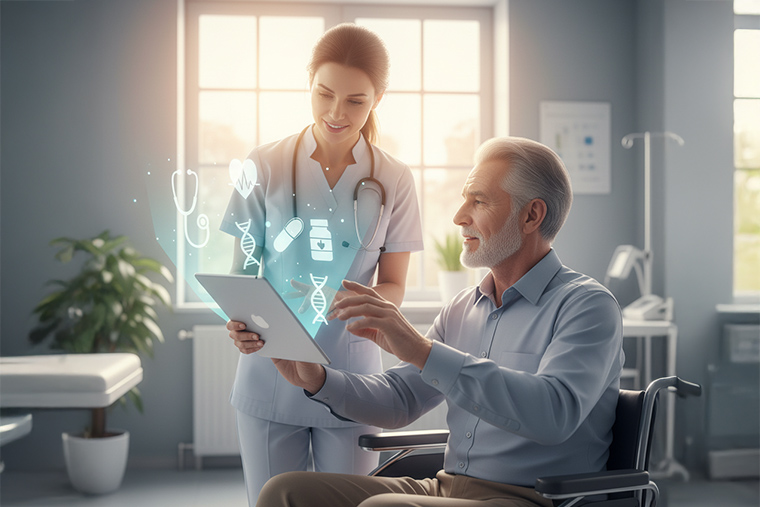Frequently Asked Questions
1. Which patient populations benefit most from RPM?
Remote Patient Monitoring delivers measurable value across several chronic and acute conditions, but the highest impact is consistently seen in hypertension, congestive heart failure (CHF), chronic obstructive pulmonary disease (COPD), diabetes, and post-operative recovery. These groups typically require frequent vitals tracking—blood pressure, weight, oxygen saturation, glucose levels, or heart rhythm—that can signal deterioration days before a scheduled office visit. By streaming those metrics in near real time, clinicians can titrate medications sooner, schedule same-day telehealth consults, and avoid unnecessary emergency-department utilization. CMS also recognizes these cohorts as high-value, which is why the agency has designated specific RPM and Chronic Care Management codes for them, further strengthening the financial ROI for providers.
2. How fast can we go live?
The implementation timeline depends on whether you choose our turnkey SaaS or a custom-configured deployment. For most health systems that leverage the out-of-the-box platform with standard Epic, Cerner, or athenahealth integration, we target a 4-to-6-week launch window. Week 1 focuses on discovery, security reviews, and project kickoff. Weeks 2-3 cover device procurement, EHR sandbox connectivity, and workflow mapping. Weeks 4-5 are dedicated to staff training, patient enrollment, and a pilot with 25–50 patients. Go-live typically occurs at the end of week 6, followed by a 30-day hyper-care period where we closely monitor performance and address any issues in real time.
3. Is the solution HIPAA-compliant?
Absolutely. Compliance is engineered into every layer of our tech stack and operational processes. All data in transit uses TLS 1.3 with forward secrecy, while data at rest is protected by AES-256 encryption and automatic key rotation. We maintain detailed audit logs, user-role segregation, and multi-factor authentication for both patients and clinicians. Cabot signs a Business Associate Agreement (BAA) with every covered entity and undergoes annual SOC 2 Type II, HITRUST, and penetration testing audits. Our hosting partners hold ISO 27001, FedRAMP Moderate, and HIPAA attestations, ensuring that your organization can pass any internal or external security review without additional remediation work.
4. Can we use our existing devices?
In many cases, yes. Our platform is device-agnostic and supports Bluetooth®, Wi-Fi, and cellular hardware that transmits data in standard BLE or IEEE 11073 formats. During the planning phase, our biomedical engineers validate your current inventory’s firmware, encryption protocols, and data-mapping schemas. If your devices meet FDA clearance and interoperability guidelines, we simply integrate them using our open APIs, avoiding new capital expenditure. If certain models fall short—e.g., lack cellular fallback or FHIR mapping—we offer compatible replacements at negotiated bulk rates. Either way, patients experience a seamless onboarding process with no additional app downloads or calibration headaches.
5. How is patient adherence maintained?
Sustained engagement is critical for clinical efficacy and reimbursement compliance. We employ a multi-layered approach: (1) automated and behaviorally-optimized SMS and push reminders based on each patient’s routine; (2) a mobile app that translates raw vitals into easy-to-understand “traffic-light” feedback and gamified streaks; (3) caregiver and family notifications that prompt additional social support; (4) multilingual educational videos that demystify device usage; and (5) access to our 24×7 technical support line staffed by healthcare navigators. Combined, these tactics have maintained an average 86 % adherence rate over a rolling 12-month period—well above the industry benchmark of 60-65 %.
6. How do you support reimbursement?
Our platform automatically tracks the cumulative time clinicians spend on RPM services—device setup, patient education, and interactive communication—down to the minute. This data feeds directly into your billing system via HL7 or FHIR, creating ready-to-submit claims for CPT 99453, 99454, 99457, and 99458. We also generate audit-ready documentation that links each billing event to its corresponding clinical notes and patient-generated health data. For organizations lacking in-house expertise, our RCM specialists offer end-to-end services: eligibility checks, claim submission, denial management, and periodic audit support. As a result, clients typically see first-pass acceptance rates above 96 % and a 20-30 % uplift in RPM revenue within the first two quarters.







